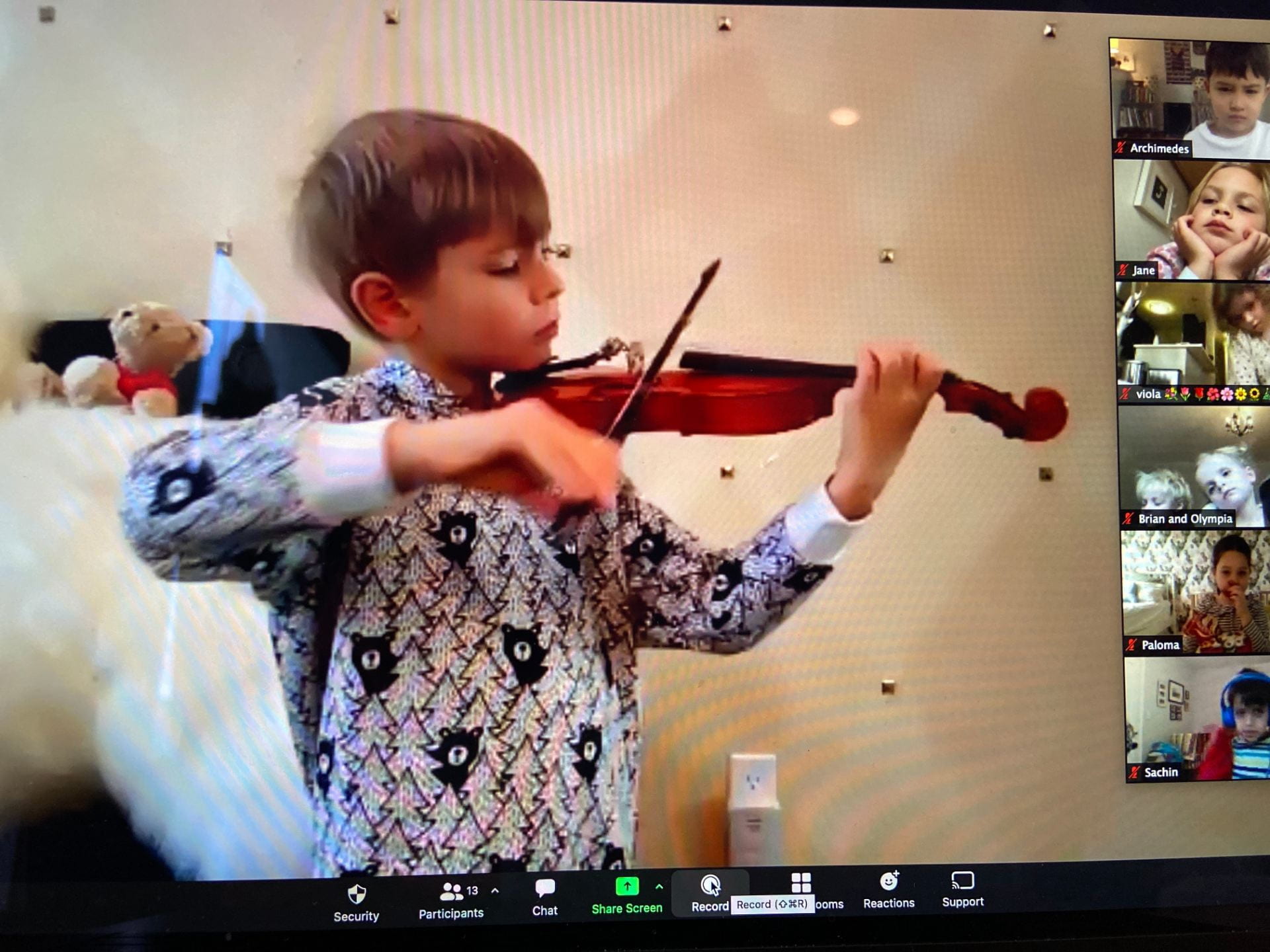The 2020-21 school year has been like no other for all faculty, students, staff, and administrators across the country.
After ending the previous school year teaching remotely, early childhood teachers at LREI had to pivot to in-person teaching in September. The planning involved for September started weeks before the First Day of School. Teaching Kindergarten under COVID-19 involved ordering new furniture, learning new safety protocols, and creating new classroom routines in order to maintain socially-distanced learners.
I consider myself a well-seasoned teacher with more than 20 years experience, yet my new classroom setting was unlike anything I had experienced before. Not only was I teaching outdoors in a courtyard, my students had individual desks facing forward and spaced six feet apart – a completely foreign concept to my progressive teaching practice. My new “Forest School” classroom was beautiful, despite the fact that it did not resemble the early childhood setting I was accustomed to teaching in after so many years.
My teaching partner and I had to rethink how we wanted our students to move safely in our “new classroom.” We implemented strict guidelines of how to move in one direction and loop around the room by following arrows. No longer would groups of children be clustered together at a table to help establish friendships and community. Our meetings would not be round circles where kindergarteners could have eye contact with their peers. As an early childhood teacher, this new classroom set-up made my heart sink and led me to question my progressive practice around play and social emotional learning.
The 2020-21 school year has led me to rethink how children play both in the classroom and outdoors. As I reflected on the numerous workshops I have attended throughout my teaching career, I kept returning to my experience at the annual Teaching Kindergarten Conference: Where Did the Garden Go? at Bank Street College of Education to help inspire me with new ideas for collaborative play and building community under COVID-19.
Some key questions I would like to focus on are:
- How do you facilitate collaborative play in the early childhood classroom under COVID-19?
- How do these current constraints with regard to play, help us to better understand the nature of play itself?
- When do kindergarteners have the opportunity to play and establish friendships?
- What does Worktime look like under COVID-19?
- Are we finding new ways and spaces to engage learners in play?
- How do we take these learning forward with us especially if they have implications beyond the pandemic?
- What opportunities are kindergarteners getting to connect with peers under COVID-19?
I hope this self-study helps me reimagine what teaching early childhood looks like in our “new normal.” The current social-distance conditions have modified play and classroom culture in our Kindergarten. I am curious to explore how these new ways to learn and play are changing my practice. Some of these modifications have led to new ways kindergarteners play and connect with one another under a pandemic.
As we transition into our next phase of teaching and learning, I also wonder what “new” routines and structures established under the COVID-19 would work once the pandemic has subsided. I’m also excited to explore how this work can serve as a lens to examine own practice:
- Have these new structures made me a more “playful” practitioner?
- How are these constraints creating new possibilities in my work as a teacher?





